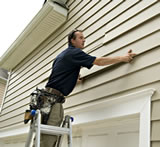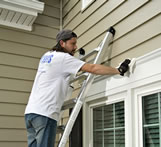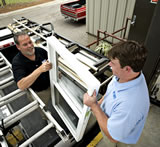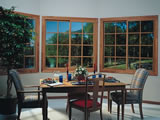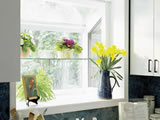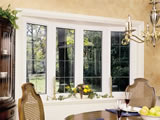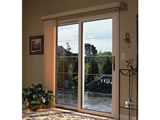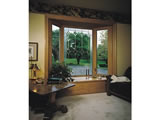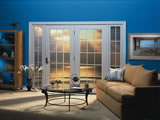How Replacement Windows Work – A Review of your View
Is your house cold in the winter? Is it drafty? Or is it too hot in the summer, so you have to retreat to the confines of your cool basement? It’s ok – don’t sell your house. There’s an easier answer to your woes – replacement windows. Replacing old windows is a great way to make your home life easier – in many ways. So we’d like to show you how replacement windows work – what to look for and how to prepare. And when we’re done, you’ll be done being uncomfortable. So get out your notebook, and pay attention.
Why would you want replacement windows?
There are many reasons why people decide to shop for replacement windows for their homes. Most of them are based on either comfort, or cost. If the windows currently in your home are drafty, or cold, then you’ll probably want to consider replacing them. If your home gets very hot during the summer, then that’s another reason. If you’re having trouble keeping up with the rising cost of heating and/or cooling your home, then that, too, creates a need for you to replace your windows.
They say “Dreams are the windows of the soul”. Well, if your windows are giving you nightmares, then perhaps your soul is trying to tell you to go shopping for replacement windows. With the wide selection available these days, we’re sure you can solve your woes with some beautiful windows that’ll not only make your home more attractive, but will make it more comfortable and less costly, too.
What are replacement windows?
There are several basic types of replacement windows, with each style having its own special purpose. Pretty well all windows these days are double-pane. That means that there are two panes of glass with an airspace between them. These days, they’re even adding insulating gas instead of air between the panes, to reduce heat loss. Double-pane windows are much more energy efficient than their predecessor, the single-pane window. However, there are still some uses for single-pane windows – wherever warmth isn’t a factor, like in sheds or barns or other outer buildings. But with the focus on energy efficiency these days, there’s not a lot of call for them in homes.
Another old standard that’s slowly making its way out is clear glass. With technology advancing as fast as it is these days, glass is changing – not the actual makeup of the glass, but what they put on it and between it. The purpose of the replacement window industry is to create a window that’s functional, cost-effective, energy efficient, and looks good, too. That’s a tall order, but they’re doing a great job of it.
What are replacement windows made of?
There are four basic materials used for making the framework of replacement windows today. The oldest source of window frames is wood. Wood will always be the best insulator, but it’s the disadvantages that’ve led to the industry’s pursuit of a higher-quality, more functional material. The first material to be added to a window frame was vinyl. Vinyl is now added to wood, in a composite material called Fibrex, that increases the strength and endurance of the window frame. It also makes windows more customizable.
Aluminum has been a common material used in windows for some time. It, too, is easily customizable, but it’s not a very good insulator. How many times have you seen mildew around the frame of an aluminum window? That’s because it causes condensation and, unless you wipe it up regularly (which is a pain), you’ll have problems. That’s why aluminum windows are slowly becoming a thing of the past.
Some replacement windows are made of fiberglass, but this isn’t a very popular choice because it’s quite expensive.
Energy efficiency is a major goal of replacement windows
With the high cost of utility bills these days, and the environmentalists lobbying for ways to save energy, the replacement window industry has stepped up to the plate and produced many ways to please everybody involved. Energy-efficient windows are becoming the norm today and the methods of accomplishing this are quite interesting.
If you stand by your window, it’s easy to understand why changes are being sought. In the summer, it’s hot; in the winter, it’s cold. So there’s a drive to build a wall between you and the outdoors – a wall you can still see through. And that’s what technology has created. They’ve found a way to keep your house comfortable, no matter what the season or climate.
You want your home to be warm in the winter and cool in the summer. If your windows are there just to allow you to see outside, then they’re doing their job. But if you want them to be instrumental in keeping your house at a constant comfortable temperature, then you need more. You need the new technology of replacement windows.
One of the first methods of insulating your windows was to double them – that is, put two panes of glass in the window frame, with an airspace between the two. The idea behind this is that the air between the panes will keep the outside window at the outside temperature, and the inside window at the inside temperature, and “ne’er the twain shall meet”. This worked fine, but not as well as people wanted.
The next innovation was to cover the window with a clear coating that would improve heat loss without decreasing light. That improvement came in the form of low-emissivity (Low-E) glass. It improved heat loss by 40%-70%. But people wanted still more.
So heat-absorbing glass was developed. This glass absorbs up to 45% of sunlight, keeping indoors cooler. However, some heat was still getting through. So on to the next development – reflective glass. Reflective glass is coated with a film that reflects sunlight instead of absorbing it. So now the heat stays out, or in, depending on what time of year it is, and on what you need to make you comfortable.
What type of replacement window should you get?
There are many types of replacement windows. Shopping for them is no different than shopping for any other major purchase. You need to do your homework – find out what you can afford, what looks good with your house, what’s the most functional for your home, what’s the most energy-efficient. You need to go to showrooms. “Test-drive” all the models. Open and close the windows. Get to know them well.
It’s also very important to get accurate measurements. There’s always a little leeway when you’re fitting replacement windows, and there are ways to make small adjustments, but we’re talking about a matter of about an inch either way – not a lot of room for error.
When you’re considering what type of windows to buy, you’ll find your choices are numerous. Depending on its use, you’ll be able to pick any one of the following styles. There are single-hung, awning, bay, bow, fixed frame, slider, double-hung and casement replacement windows. That’s a lot of thinking for you. But if you’ve done your homework, you’ll know when you see it, which style is best for your home.
Replacing your windows needn’t be a chore
Have fun with your project. Replacement windows are going to give you all kinds of advantages with your home. They’ll make it look more attractive. They’ll make it more energy-efficient, thus saving you money. They’ll make your cleaning easier. They’ll increase the value of your home. All these points add up to the bottom line – it’s worth it!
So don’t be intimidated by the size of the job. If you make a plan and follow it step-by-step, you’ll soon be able to sit back and see the fruits of your labor. Enjoy!
Also see: .
About The Author
Gareth Marples is a freelance copywriter providing tips and advice for consumers purchasing . His numerous articles offer moneysaving tips and valuable insight on typically confusing topics.
This article on reprinted with permission.



